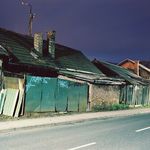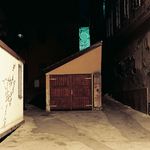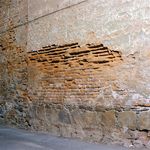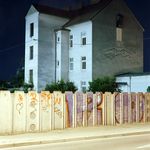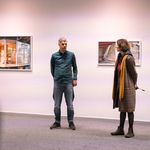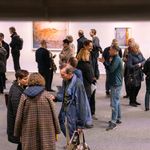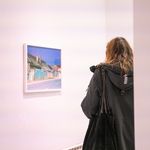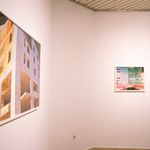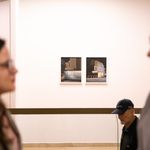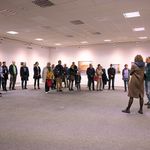Matija Brumen / Maribor. Pictures from Abyssinia

Matija Brumen / Maribor. Pictures from Abyssinia
UGM Studio, Trg Leona Štuklja 2, 2000 Maribor
18 November 2022 – 7 January 2023
Curator: Andreja Borin, museum counsellor
Matija Brumen has been present on the art scene for over two decades. This is the forth time he has presented himself in Maribor with a solo exhibition. His series entitled Maribor, which he started in 2012, is a work in progress, in which the photographer, who occasionally returns to the city of his childhood, has been devoting himself to the city's nocturnal motifs for a full ten years.
Night is a time that alters the visible reality and adds a different dimension. Brumen's photographs reveal the unknown and unique existence of the city: buildings, extensions, shacks, streets, bridges, passages and underpasses, and also lonely trees here and there. It is a world without people, their absent presence is only felt through the traces they left behind. The specific feeling that emerges from his photographs is not only tied to Maribor. Similar photos could have been taken elsewhere, but there is clearly something in this city that other artists have recognised as well. Photographers Ivan Dvoršak (1934–2013) and Zmago Jeraj (1937–2015), for example, pursued similar suburban motifs and a related "mood" of bitter loneliness and abandonment in the 1970s. In their images from the time of the Maribor Circle, time stands still or flows with millimeter slowness (to epitomise from Aleksander Bassin). So the images of Matija Brumen are also trapped in a similar time capsule.
The artist says that when creating this series, he often had Drago Jančar's novel Northern Lights in mind. In this novel from 1984, the writer masterfully paints an image of Maribor just before World War II, and part of the action takes place in a shantytown called Abyssinia, which actually existed. This poor, mysterious, and rundown settlement is inhabited by people who, as Drago Jančar says, walk on unknown land simply because they carry terra incognita in them*. And the city itself also carries this terra incognita (lat. unknown land) within. There is no need to walk very far from the central square to come across it. With the Maribor series, Matija Brumen weaves a tangible connection both with a part of Maribor's history and the specific genius loci of the city. However, the artistic presence of the images surpasses the local environment by far. When the photographer directs his attention and the eye of the camera to an insignificant object or space and exposes it, he also gives it a new meaning. Specific framing, unusual lighting, and refined aesthetics thus transform the seeming unattractiveness into bitter poetics. In this case, the world on the outskirts is the space we see behind the urban mask. It is the bowels of the city, which conceals wounds, mirages, apparitions, and phantoms of all kinds. It is a place we know. And we see it for the first time. Terra incognita.
*Drago Jančar, Severni sij [Northern Lights], pp. 24, Pomurska založba, Murska Sobota 1984
Matija Brumen (b. 1975 in Maribor) is a distinguished photographer with an idiosyncratic style. While studying philosophy and Japanese studies, he also became interested in photography, which he studied as a postgraduate student at the Academy of Fine Arts and Design in Ljubljana. He was also trained at the Folkwang University of the Arts in Essen, Germany. He has been actively involved as a photographer since 2000, regularly publishing and participating in exhibitions at home and abroad. He currently lives and works in Ljubljana.

